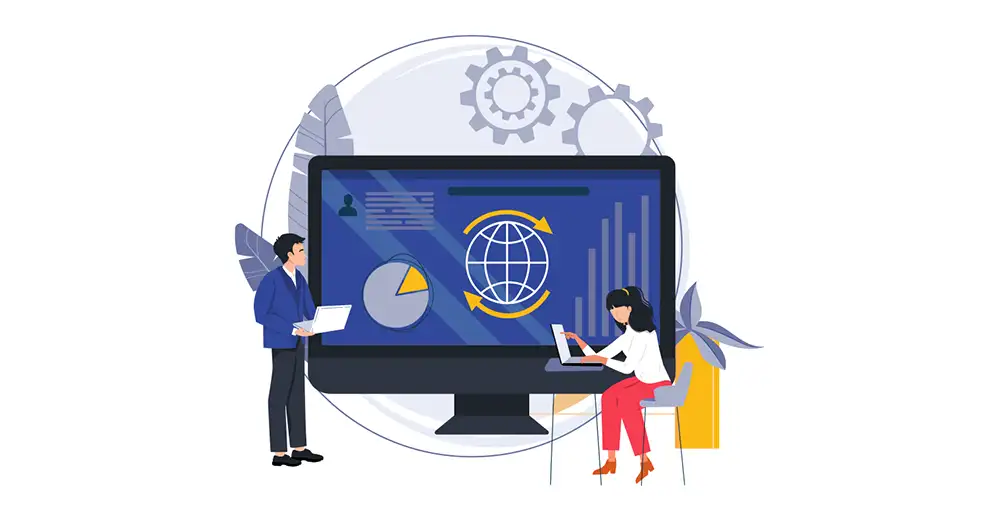 Piyush P
Nov 24, 2025
Piyush P
Nov 24, 2025

Data science combines statistics, computer programming, and analytics to extract value from both structured and unstructured data. In 2025, data science will rank among the top 5 career paths globally. This is due to the emerging uses of artificial intelligence, machine learning, and data-driven decision-making globally.
Across predictive analytics, automations, and the digital transformations of governments, corporations, startups, and institutions, data science is vital. Without data science, institutions can’t effectively understand the enormous volumes of data generated daily. This explains the heightened training interest in data science, especially among IT, finance, healthcare, and business professionals.
This guide covers all the core fundamentals of Data Science, its lifecycle, tools, prerequisites, and applications in 2025. We will also discuss jobs and salaries, as well as opportunities for career advancement.
Data Science is the application of statistics, mathematics, and computer science, along with other analytical tools, to derive valuable information from large, messy datasets.
It aids in the decision-making, problem-solving, and forecasting abilities of organisations. The first step in understanding ‘What is Data Science and How It Works’ is to realise the discipline involves much more than simple coding and statistics. It is the striking blend of different technical abilities with a problem-solving orientation to convert simple raw data into valuable information that fuels business and innovation.
Mathematics offers theoretical frameworks, programming allows for hands-on execution, and knowledge of the subject area guarantees that the outcomes are practically relevant. Collectively, these attributes empower data scientists to refine, abstract, and decipher data to reveal hidden insights and address organisational challenges.
Data science is often misconstrued as purely data analytics, which is inaccurate. People often confuse Data Science and Data Analytics. Data Analytics, Business Intelligence, and Data Science are related, yet there are distinctions to consider, such as:
Each step in the data science lifecycle helps in providing a clear solution to a problem. It helps to approach a project cohesively, beginning from business understanding all the way to deployment. For a good start in your professional journey in Data Science, a Data Science Course is a good option.
The typical data science lifecycle include the following stages:
Business Understanding: Define the objectives and the expected outcomes, including the success metrics. Without this, a team can potentially be solving the wrong problem or misusing the data.
Data Collection: The data can be collected from cloud storage, API, sensors, or various databases. This can be customer data, financial transactions, and even real-time sensor data from IoT devices.
Data Cleaning: This involves identifying and removing duplicates, adjusting formats, and dealing with missing values. This is often the longest stage since data in the real world is often poorly organised.
Exploratory Data Analysis (EDA): To understand the data, statistical instruments of stats and visual representation are utilised to recognise various patterns. Analysts create visualisations like graphs and charts along with summary statistics to demonstrate relationships, identify patterns, and define trends.
Modelling: Various algorithms can be employed, including regression, decision trees, and deep learning. Each of these modelling techniques provides different advantages. For instance, while deep learning is used for image and speech recognition, regression is used for predictive analytics.
Evaluation: This is where business objectives are determined using metrics such as accuracy, precision, recall, and the F1-score. Different techniques are also assessed using a validation dataset. From there, a business objective is defined to understand and evaluate a business objective-centred model’s performance.
Integration: Each of these examples displays the application and integration of insights into core business functionalities post-deployment of predictive models into dashboards of operational systems.
Maintaining and Monitoring Models: Each model requires upkeep, which entails updating and verification to ensure accuracy over time. Given the evolving parameters of data, models may undergo drift. This drift needs to happen so the model can be considered trustworthy.
At present, there are no specified prerequisites for Data Science. Nevertheless, possessing certain competencies and prior knowledge will ease the learning process and enhance one’s employment opportunities.
When it comes to data science tools, there are many to select from the vast ecosystem. Each professional chooses tools according to their specific roles. Generally, analysts concentrate on BI and visualization, while machine learning engineers focus on deep learning frameworks and deployment tools. The tools that are most commonly chosen include the following:
Data Science is one of the fastest-growing careers, and the U.S. Bureau of Labour Statistics is predicting an increase of 34% for available jobs titled data science. Globally, this will create numerous openings, making data science a very promising career.
Hal Varian (Chief Economist at Google) states, “The ability to understand data—processing it, extracting value from it, visualising it, and communicating it—will be an immensely important skill in the coming decades.”
In the coming decades, this translates to data skills being just as important as the fundamentals of reading and writing.
Data Science is a well-paid profession, especially in technology, finance, and healthcare, with salaries varying according to industry and geography, as per Indeed reports.
Data Science career building is multifaceted, involving a combination of technical competence, analytical ability, and a commitment to ongoing education. The Guide to Data Science career path aims to make the aspiring data scientist successful.
With digitalisation permeating all sectors, data science has become a critical and secure professional career. There is a wide range of industries, from healthcare, finance and retail to automation, looking to transform their raw data into actionable insights. The growth of Artificial Intelligence and Cloud analytics promises a markedly increased demand for personnel with data science skills, especially in manufacturing. Opting for a data science career comes with guaranteed employment as well as the opportunity to work on transformational projects at a global level.
Practising problem-solving using Python, SQL, TensorFlow, Tableau, and Cloud platforms is an invaluable pursuit. Apart from the KHDA-approved Data Science certifications, real-life projects from reputable institutions like the Edoxi Institute can also help boost one's employability.
In the coming years, professionals will have to develop the expectations of emerging new technologies, engage in continuous learning, and embrace new experiences. For a fresher entering the professional world and someone attempting a professional shift, learning data science is a necessity. The skills will be highly sought after and will lead to great global opportunities.
1: Will data science be in demand in 2025?
Absolutely! With the remarkable growth of AI across several sectors, data science will continue to be one of the most sought-after fields. Organisations need data specialists to analyse and provide insights into data.
2: Do I need a master’s degree to become a data scientist?
No! There is a range of online certifications, bootcamps, and a strong project portfolio that many professionals use to enter the field. Employers value skills and experience far more than a degree.
3: Which sectors employ the highest number of data scientists?
Industries like IT, finance, healthcare, retail, and consulting. These fields create a large volume of data that needs to be processed and actionable insights created.
4: What is the duration of the certification process for data science?
While some courses may only take 8 hours to complete, full-stack data science courses can take up to 140 hours. You may explore the best Data Science Courses here.
5: Can you differentiate data science from data analytics?
Data Analytics provides insights on historical data, while Data Science has to do with predictive analytics, model building, and process automation.

Microsoft Azure Certified Data Science Trainer
Piyush P is a Microsoft-Certified Data Scientist and Technical Trainer with 12 years of development and training experience. He is now part of Edoxi Training Institute's expert training team and imparts technical training on Microsoft Azure Data Science. While being a certified trainer of Microsoft Azure, he seeks to increase his data science and analytics efficiency.